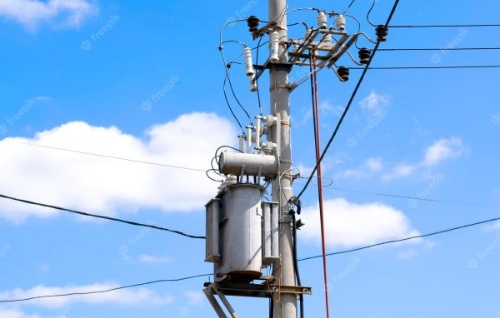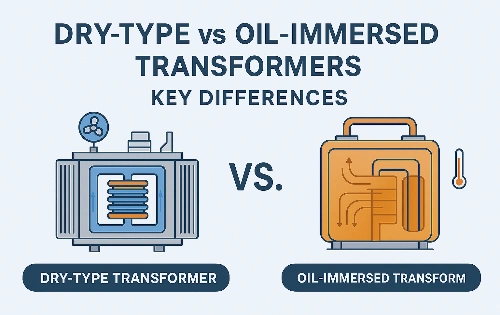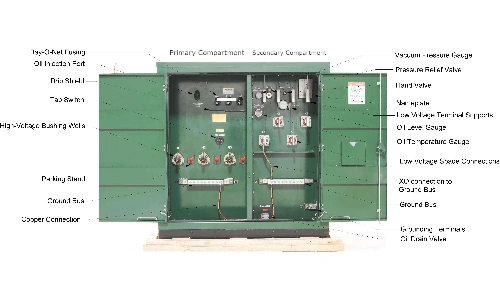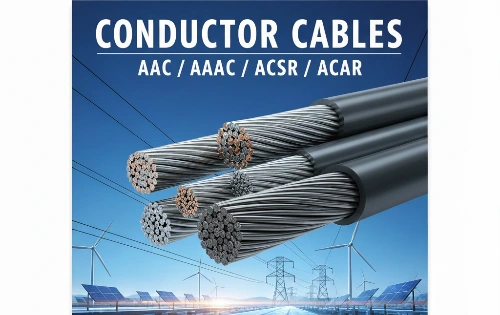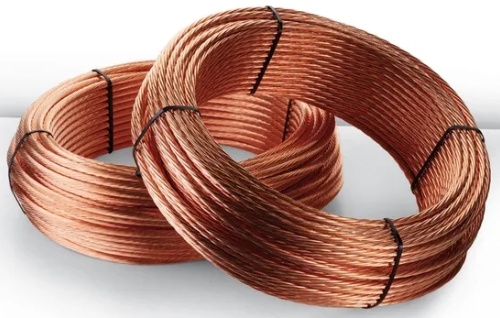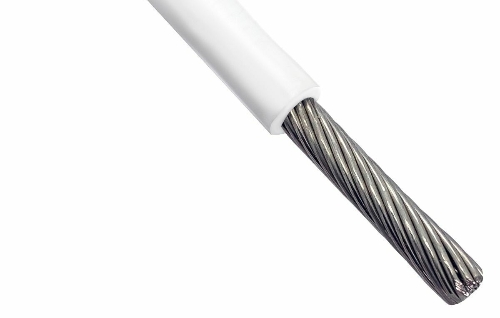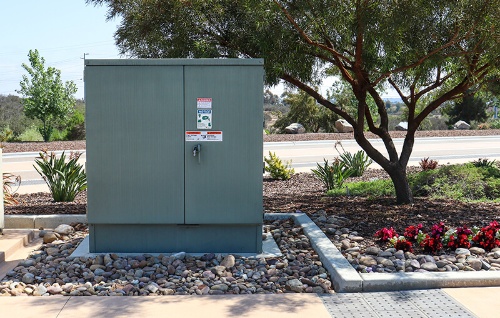What Is an Oil-Immersed Transformer? Working Principle, Advantages, and Applications
In modern power systems, transformers play a critical role in stepping up or stepping down voltage for efficient transmission and distribution. Among the various types of transformers, the oil-immersed transformer remains one of the most widely used, particularly in power distribution networks where durability, thermal performance, and long operational life are crucial.
1. What Is an Oil-Immersed Transformer?
An oil-immersed transformer (also known as an oil-filled transformer) is a type of distribution transformer or power transformer where the core and windings are submerged in insulating oil inside a sealed tank. The oil serves two key purposes:
- Insulation: Preventing electrical discharges between internal components.
- Cooling: Dissipating the heat generated by the iron core and windings during operation.
Basic parameters:
Primary Voltage Ratings: 34.5-19.92/13.8-7.957/13.2-7.62/12.47-7.2, 24.94, 26.25, 33 or others
Secondary Voltage Ratings: 480/277V, 400/230V, 380/220V or customized
H.V. Tap Range: ± 2×2.5% HV taps or others
Type: Oil immersed distribution transformer
BIL: 30/95kV
Standards: IEEE, UL, ISO, IEC, GB
Application: Industrial Power Distribution, Commercial Buildings, Agriculture, Power Distribution Substations
Power Rating: 30kVA - 2500kVA
Certificate: ISO, CE, UL, IEEE
Cooling Method: ONAN, ONAN/ONAF, KNAN, KNAN/KNAF
Oil: Mineral Oil or FR3
Operation: Step Down & Step Up
These transformers are essential in medium- to high-voltage applications, including industrial plants, substations, and rural or urban power distribution networks.
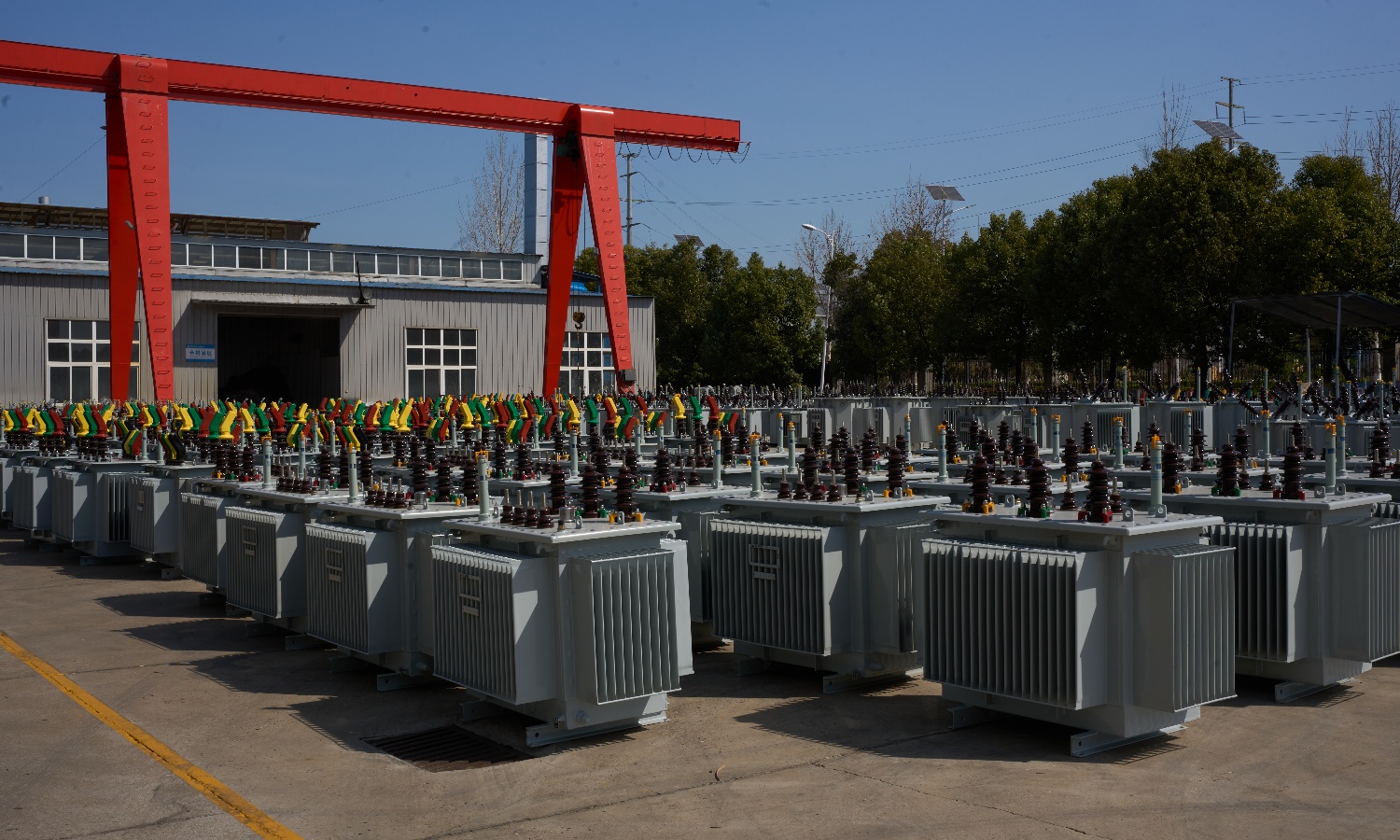
2. Working Principle of Oil-Immersed Transformer
Like all voltage transformers, the oil-immersed transformer operates on the principle of electromagnetic induction. The iron core acts as a magnetic pathway between the primary and secondary windings.
Here’s how it works:
- AC voltage is applied to the primary winding.
- A changing magnetic field is created in the iron core.
- This induces a voltage in the secondary winding, adjusted based on the turns ratio.
- The heat generated in the core and windings is transferred to the oil, which circulates naturally or via a pump, transferring heat to the radiator where it is cooled.
This closed-loop oil circulation maintains optimal temperature, ensuring consistent transformer performance and extended service life.
3. Types of Oil Used in Oil-Filled Transformers
The choice of oil significantly affects transformer safety, efficiency, and environmental impact. Common types of oil include:
- Mineral Oil: Most widely used due to its cost-effectiveness and thermal properties.
- Silicone Oil: Offers higher fire resistance but is more expensive.
- Natural Ester (Vegetable-based oil): Biodegradable and environmentally friendly; gaining popularity in eco-conscious applications.
- Synthetic Ester: Excellent insulation and fire safety properties; suitable for compact, high-risk environments.
The selected oil must possess high dielectric strength, good thermal conductivity, and chemical stability under varying electrical and thermal stresses.
4. Type of Oil-Immersed Transformers
Oil-immersed transformers are categorized based on function, design, and cooling method:
a. Power Transformers
- Typically rated above 1 MVA.
- Used in transmission networks for stepping voltage up or down over long distances.
b. Distribution Transformers
- Typically rated below 1 MVA.
- Installed near end-users to lower voltages for household or light industrial use.
c. Hermetically Sealed vs Conservator-Type
- Sealed Type: The oil tank is fully enclosed; ideal for small-to-medium units in harsh environments.
- Conservator Type: Features an external oil reservoir to accommodate oil expansion and contraction.
d. ONAN, ONAF, OFAF Cooling Types
- ONAN: Oil Natural Air Natural – uses natural convection.
- ONAF: Oil Natural Air Forced – adds fans to enhance air cooling.
- OFAF: Oil Forced Air Forced – pumps and fans both used for intensive cooling in large units.
5. Oil-Immersed vs Dry Type Transformers
|
Feature |
Oil-Immersed Transformer |
Dry Type Transformer |
|
Cooling |
Oil-based (natural or forced) |
Air (natural or forced) |
|
Insulation |
Oil + Paper |
Resin or air |
|
Location |
Outdoors, substations |
Indoors, commercial buildings |
|
Maintenance |
Regular oil testing & sealing checks |
Lower maintenance |
|
Fire Hazard |
Higher (without special oil) |
Lower |
|
Cost |
Lower initial cost |
Higher initial cost |
While dry type transformers are ideal for indoor, fire-sensitive environments (like hospitals, offices), oil-immersed transformers are still the go-to choice for outdoor, high-capacity applications.
6. Advantages of Oil-Immersed Transformers
- ✅ Superior Cooling: Oil conducts heat better than air, allowing for higher load capacity.
- ✅ Longer Lifespan: Well-maintained units can operate for 30+ years.
- ✅ Higher Efficiency: Especially in high-load scenarios.
- ✅ Cost-Effective: Lower initial and operational costs compared to dry-type units.
- ✅ Scalability: Can be custom-designed for small distribution or large power applications.
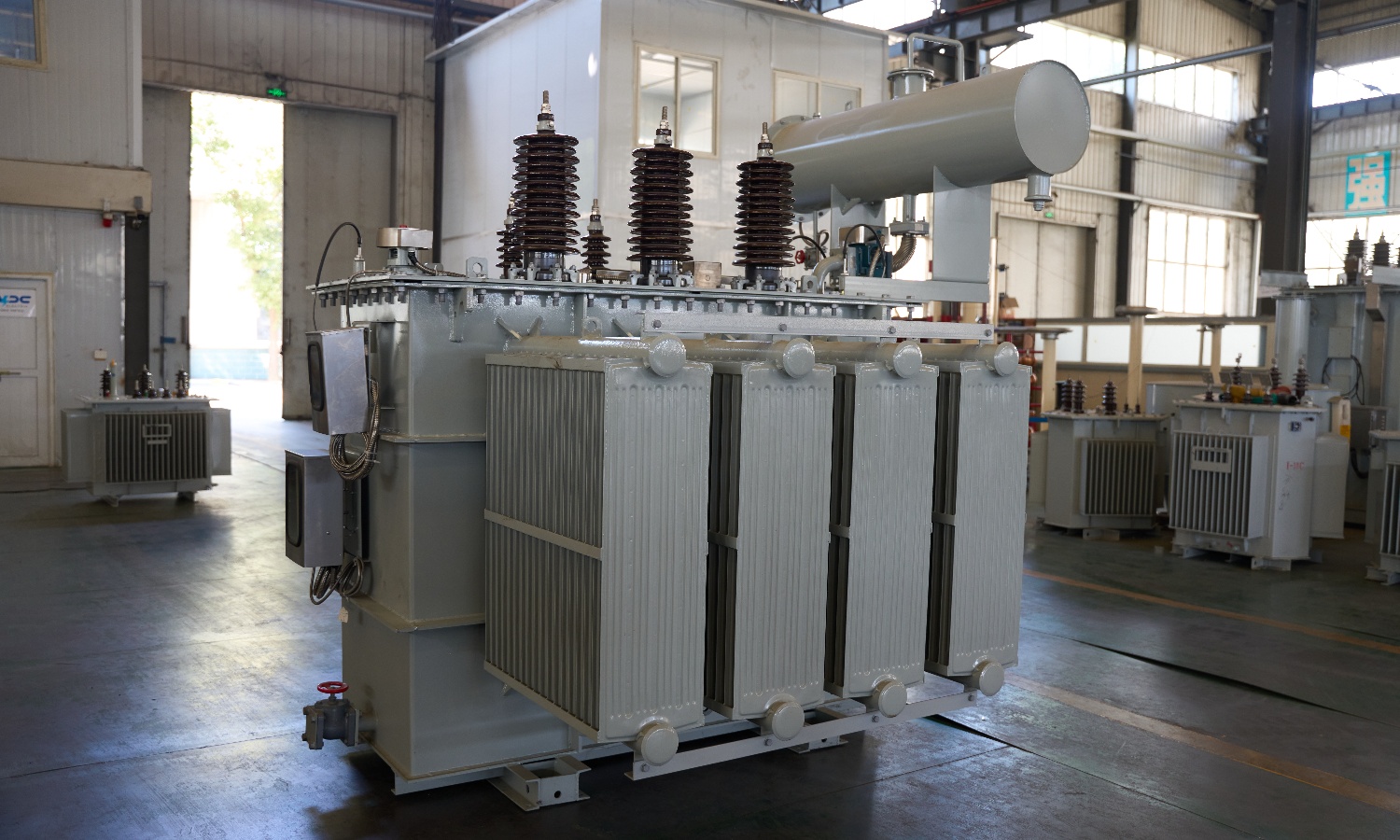
7. Applications of Oil-Immersed Transformers
Oil-immersed transformers are found across a range of sectors:
- Utility Power Grids – Mainstay in regional transmission and distribution transformer substations.
- Industrial Plants – Power voltage transformers that drive heavy machinery.
- Renewable Energy – Used in solar farms and wind power installations to connect to the main grid.
- Railway Electrification – Ensures stable power delivery to high-speed systems.
- Commercial Complexes – Outdoor installations supporting large commercial infrastructure.
8. Maintenance and Safety Considerations
Despite their durability, oil-immersed transformers require:
- Routine oil testing (dielectric strength, water content, acidity)
- Thermal imaging to detect hot spots
- Sealing checks to prevent moisture ingress
- Buchholz relay monitoring for gas build-up in conservator-type units
With proactive maintenance, potential faults can be identified early, preventing failures and costly downtimes.
The oil-immersed transformer remains an integral part of modern power distribution infrastructure. With unmatched cooling efficiency, reliable performance, and broad applicability, these oil-filled transformers are irreplaceable in many high-demand environments.
While dry type transformers offer safety and indoor use advantages, oil-immersed units dominate where performance, longevity, and cost-effectiveness are prioritized.
As energy demands grow and power networks evolve, understanding the working principle of oil immersed transformers and their applications is key for engineers, project developers, and energy professionals.

